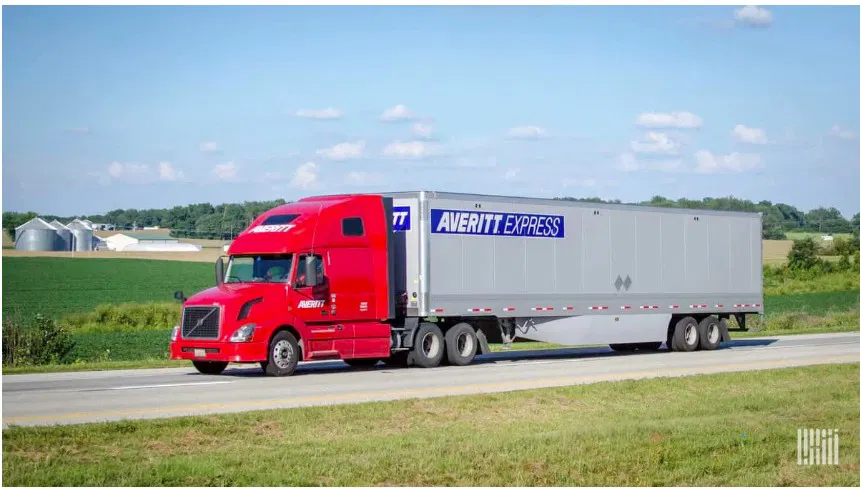Nedávný vývoj v odměňování řidičů
Společnost Averitt Express se dostala na titulní stránky novin oznámením o zvýšení platů řidičů, což potenciálně naznačuje širší změny v odvětví. Toto zvýšení je obzvláště pozoruhodné, protože představuje významný posun v trendech regionálních mezd řidičů a může mít dopad na logistický sektor jako celek.
Hlavní body
- Společnost Averitt Express zvýšila plat regionálním řidičům s doložkou pro nebezpečné materiály na 64 centů za míli, což je největší nárůst za více než pět desetiletí.
- Zatímco nárůst mezd v celém odvětví ve srovnání s prudkým nárůstem po pandemii zpomaluje, data naznačují, že pomalý vzestupný trend přetrvává a některé sektory zaznamenávají nejvyšší hodinové mzdy v nedávné historii.
- Zprávy o mzdách řidičů se různí, přičemž některé zdroje uvádějí mírný nárůst, zatímco jiné vykazují významnější zisky v rámci specifických odvětví nákladní dopravy.
- Pokračující vzorec je vzestupný trend v odměňování řidičů, a to i přes pokles spotových sazeb za přepravu, což poukazuje na komplexní vztah mezi mzdami a tržními podmínkami.
Posun v oznamování mezd
Během vrcholu nákladního boomu po pandemii společnosti rychle oznamovaly zvýšení platů, téměř jako by soutěžily o pozornost. Tehdy se každý chtěl pochlubit, jak drží krok s průmyslovými standardy, zejména aby přilákal těžko dostupné řidiče. Rychlý posun do současnosti a zdá se, že tato oznámení se výrazně zpomalila. To je to, co způsobilo, že nedávná tisková zpráva společnosti Averitt vynikla.
Ve svém oznámení společnost Averitt uvedla historický charakter svého navýšení platu pro regionální řidiče s osvědčením pro přepravu nebezpečných věcí (hazmat endorsements), čímž ho zvýšila na 64 centů za míli z předchozí sazby 60 centů za míli.
U regionálních řidičů, kteří tato osvědčení nemají, se mzda zvýšila na 54,5 centů za míli – což je detail, který nebyl v hlavním prohlášení zdůrazněn, ale je zásadní pro pochopení celkové kompenzace.
Na dotaz, proč některé údaje nebyly zahrnuty, tiskový mluvčí společnosti Averitt poznamenal, že ačkoli jsou nárůsty pro spolupracovníky LTL (řidiči zapojení do služeb sběrné služby, spolupracovníci s doky a další) také významné, nepředstavují tak pozoruhodný posun jako u regionálních řidičů.
Postřehy odborníků z oboru
Odbornice z oboru Leah Shaverová, prezidentka Národního dopravního institutu (NTI), poskytla vhled do vyvíjejícího se prostředí mezd řidičů. Poznamenala, že od konce roku 2024 začalo tempo růstu mezd mírně stoupat, i když nárůst mezd zůstává poměrně mírný. Shaverová zdůraznila, že tento nárůst se shodoval s obdobím opatrného řízení kompenzačních praktik ve vozovém parku, které začalo v roce 2023.
Je zajímavé, že nárůst mezd řidičů se může stále odehrávat na pozadí snížených spotových sazeb za přepravu, což představuje jedinečnou dynamiku na logistickém trhu. Nedávné zprávy od American Transportation Research Institute (ATRI) ukázaly, že loňský průměrný nárůst mezd řidičů činil pouhých 2,4 %, což je výrazně méně než 10,8 % zaznamenaných v roce 2021 a 15,5 % v následujícím roce. Takové odchylky naznačují, že i když mzdy mají i nadále rostoucí tendenci, dramatické nárůsty po pandemii se ustálily.
Srovnávací data z Úřadu pro statistiku práce
Naopak, data z Úřadu pro statistiku práce ukazují silnější růst mezd u zaměstnanců mimo vedoucí pozice a ve výrobě v odvětví nákladní dopravy. Mezi květnem a říjnem 2024 se mzdy téměř nezměnily z $29,95 na $29,88 měsíčně, od té doby však neustále rostou a nejnovější údaj dosahuje vrcholu na $31,11 – což je historické maximum pro tuto kategorii mezd.
Tento vzorec naznačuje, že více společností hlásí nárůst mezd v letošním roce ve srovnání s loňským, i když nevstupují do inflačního cyklu. Jak poznamenal Shaver, dřívější váhavost se přesunula do ambicióznějších nárůstů platů v různých sektorech.
Širší balíčky kompenzací od Averitt
Oznámení také umožnilo společnosti Averitt zdůraznit její další metody kompenzace řidičů, včetně plánu sdílení zisku, který přiděluje 20 % zisků společnosti do plánů 401(k) zaměstnanců. Společnost Averitt, kromě nabídky zdravotního pojištění a placeného volna, zvyšuje svou atraktivitu jako zaměstnavatel na konkurenčním trhu.
Vzhledem k tomu, že se logistické společnosti i nadále potýkají s výzvami po pandemii, včetně výkyvů v poptávce po přepravě, je udržování konkurenceschopných platových norem zásadní. Zaměstnavatelé, kteří si jsou jisti svými strategiemi, pravděpodobně přilákají a udrží kvalitní řidiče, což bude mít v konečném důsledku dopad na celé odvětví.
Dopady na logistiku a budoucí směr
Pomalý, ale stabilní nárůst mezd řidičů, jak dokládá nedávné zvýšení platů ve společnosti Averitt, podtrhuje zásadní bod: trh práce zůstává významným faktorem v logistickém sektoru. Zatímco větší platové grafy během období rozmachu se uklidnily, postupné zvyšování platů naznačuje potenciální rekalibraci odměňování řidičů v různých logistických společnostech.
Kromě toho, protože se logistické firmy snaží zvýšit efektivitu provozu, musí bedlivě sledovat trendy v oblasti mezd. Koneckonců, dobře odměňovaná pracovní síla přispívá k lepší kvalitě služeb, včasným dodávkám a celkové provozní dokonalosti. GetTransport.com ztělesňuje tento étos nabídkou cenově dostupných a všestranných globálních přepravních řešení, která uspokojí různé logistické potřeby, od stěhování kanceláří až po manipulaci s velkými nákladními zásilkami.
I uprostřed proměnlivé ekonomické situace je jedna věc jasná: logistický průmysl se musí i nadále přizpůsobovat vyvíjející se dynamice pracovního trhu a jejím odpovídajícím dopadům na odměňování. Tato složitá rovnováha mezi řízením nákladů a zajištěním motivované pracovní síly bude určovat budoucnost logistických operací.
Závěr
Celkově lze říci, že zvýšení platů řidičů u společnosti Averitt osvětluje posouvající se trendy v odměňování řidičů a slouží jako předzvěst pro ekonomiku jako celek. Logistický sektor se musí orientovat v rostoucích mzdách a řídit kvalitu služeb, aby si udržel konkurenceschopnost. Jako GetTransport.com poskytuje efektivní a spolehlivá řešení šitá na míru logistickým potřebám, zdůrazňuje důležitost dobře fungující dopravní sítě pro usnadnění plynulého pohybu a distribuce nákladu. Díky konkurenceschopným cenám a široké nabídce služeb GetTransport.com zjednodušuje logistiku pro domácnosti i firmy. Převezměte kontrolu nad svou logistikou ještě dnes—Rezervujte si jízdu s GetTransport.com!

 Nedávné zvýšení platů ve společnosti Averitt signalizuje posun v trendech mezd řidičů">
Nedávné zvýšení platů ve společnosti Averitt signalizuje posun v trendech mezd řidičů">